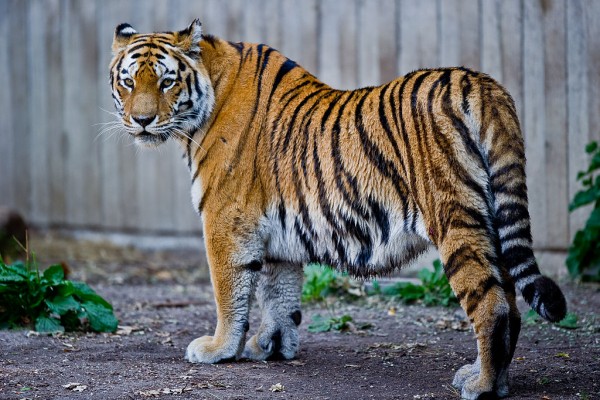By Anish Asokan, | January 19, 2017

Caspian tigers could be reintroduced to Central Asia over the next 50 years. (Bill Ebbesen/CC BY 3.0)
One of the world's largest cats, the Caspian tiger, was designated as extinct until around mid-1960s. Several issues contributed to the declining population of the cat, including hunting, poisoning, irrigation projects which eliminated the woodlands, and the disappearance of the reed thickets.
Like Us on Facebook
There was a time when the Caspian tigers roamed from modern-day Turkey through most of Central Asia to north western China.
Now, with help of a genetically identical subspecies, the extinct Caspian tigers could be brought back to Central Asia,according to Eurek Alert. A study published in the journal Biological Conservation proposes to make a site in Kazakhstan the home to a population of approximately 100 tigers within the next 50 years.
According to Professor James Gibbs, a member of the research team, a conservation biologist, and director of the Roosevelt Wild Life station at the College of Environmental Science and Forestry in Syracuse, New York, the territory of the Caspian tigers was vast and when they started to vanish, the number of host nations for tiger populations decreased by more than 50 percent.
Some researchers feel that introducing the tigers in few sites in Kazakhstan may not make a big difference. However, it could be a major step when it comes to the tiger repopulation. There has been discussions for several decades about the reintroduction of tigers to Central Asia with help of Amur tiger. In 2010, the idea received considerable support from the Kazakhstan government during the Global Tiger Forum in St.Petesburg, Russia.
Scientists have cited several reasons to back the plan to make Central Asia the new home to tigers. Among other reasons, the breakup of the Soviet Union and the establishment of states which are interested in the recovery of tiger habitats makes this location ideal. Also, recent studies show Caspian tigers are closely related to Amur tigers.
However, there are challenges such as safety to local populations, zone degradation that needs to be addressed for a sustainable future for both the people and tigers. The tiger reintroduction plan has received immense support from the Kazakhstan government and wildlife tourism agencies, according to Siasat.
-
Use of Coronavirus Pandemic Drones Raises Privacy Concerns: Drones Spread Fear, Local Officials Say

-
Coronavirus Hampers The Delivery Of Lockheed Martin F-35 Stealth Fighters For 2020

-
Instagram Speeds Up Plans to Add Account Memorialization Feature Due to COVID-19 Deaths

-
NASA: Perseverance Plans to Bring 'Mars Rock' to Earth in 2031

-
600 Dead And 3,000 In The Hospital as Iranians Believed Drinking High-Concentrations of Alcohol Can Cure The Coronavirus

-
600 Dead And 3,000 In The Hospital as Iranians Believed Drinking High-Concentrations of Alcohol Can Cure The Coronavirus

-
COVID-19: Doctors, Nurses Use Virtual Reality to Learn New Skills in Treating Coronavirus Patients







